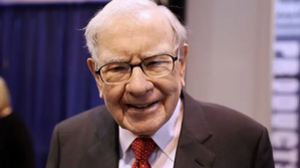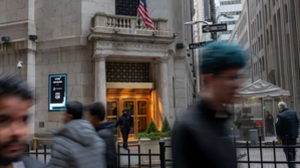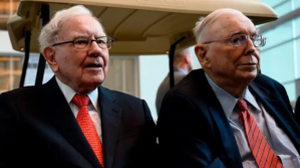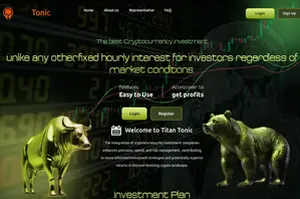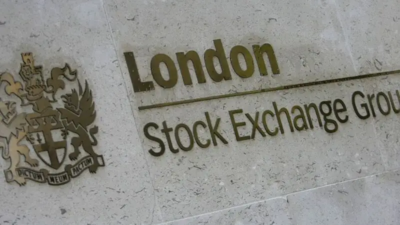What ‘Super Tuesday’ means for your portfolio
A version of this story first appeared in CNN Business’ Before the Bell newsletter. Not a subscriber? You can sign up right here. You can listen to an audio version of the newsletter by clicking the same link.
US investors have a lot to sweat this year: still-too-high inflation, a lack of clarity about when rates will come down to earth, tense foreign relations, and now, a presidential election season that is officially in full swing.
Welcome to “Super Tuesday.” Today, a whopping 16 states and territories hold primary elections. And as campaigning heats up, so too do investor’s worries — about one-third of Americans believe that their Investment strategy could change depending on who the next president is, according to recent research from Edward Jones.
But stock market analysts say not to fret and to hold tight. They think markets are ultimately more powerful than politics.
Markets over politics: This election cycle, polling and early primaries make Donald Trump and President Joe Biden the frontrunners in the 2024 race. Markets like certainty, and because both candidates have already been president, there’s some relief about the familiarity and knowledge of what to expect, said Angelo Kourkafas, senior Investment strategist at Edward Jones.
Although there are large divergences between the major candidates’ views on the economy, politics and policies often influence the market less than other factors. For example, Covid decimated a tax-break-induced market run during Trump’s administration. Markets loved Biden’s stimulus plan in his first year, but the Fed’s hyperaggressive rate hikes in response to inflation sent stocks tumbling in 2022, only to rebound in 2023 and this year in anticipation of rate cuts.
Also, promises made by candidates are not always promises kept.
“What sounds promising during election campaigns often may not work in reality, so don’t put stock (literally or figuratively) into those claims,” Kourkafas said. “Market forces are more influential than political forces over the long term.”
The stock market has increased under every political combination in Washington, and the economy has grown regardless of which party controlled the White House and Congress, Edward Jones found.
That’s part of what analysts at Raymond James call the perception gap, where political polarization can distort economic views.
An example: “The annualized return for the S&P [500] was almost identical in the Trump administration and the Obama administration, despite antithetical policies and beliefs,” said Simon Hamilton, a financial advisor with Raymond James.
Based on annualized returns for the S&P 500, stocks gained an average 13.75% during Trump’s presidency. President Barack Obama saw a 13.84% return over both of his terms.
Political talk can also paint a bleaker economic picture than the data suggests: more than 48% of Americans say they believe the economy remains in a downturn, according to a recent CNN poll. But in reality, incomes are up, the economy is growing and consumer sentiment is near recent highs. But 49% of Democrats said they believe the economy is recovering, compared to just 6% of Republicans who said the same thing, according to the poll.
“Because there’s so much political discord and polarization, even though a Republican may still be spending plenty, their perception of the economy is negative,” said Hamilton.
But investors are reminded every four years that “markets are, at the end of the day, guided by the broader path of the economy, earnings and interest rates, not politics,” said Kourkafas. “That’s not to downplay the importance of the democratic process. But we have a long history of market data that support this view.”
How to ride the wave: There may be some knee-jerk market reactions to political developments, especially as we get closer to November, said Kourkafas, but it’s “crucial to tune out the noise.”
The success and resiliency of the markets don’t change with each election, “and neither should your Investment strategy,” he said.
While election outcomes are incredibly important to the fabric of the United States, companies and markets “tend to anticipate and adjust rather than reacting solely to policy changes,” said Hamilton.
Election year math: History shows that stocks typically gain during the fourth year of presidential terms.
The S&P 500 index has added 5% in the eight weeks following Election Day through the end of the year in the median election year since 1984, compared to a 2.6% gain during the same period during non-election years, according to Goldman Sachs.
Still, stocks could see a milder rally this year. The S&P 500 has gained 6.2% on average during the fourth year of presidential terms since 1932, according to Yardeni Research. That’s below the 13.5% gain the index has averaged during the third year of presidential terms since 1931.
Cocktail party fodder: While markets tend to advance during election years, they do better when Congress is out of session entirely.
More than 90% of the gains in the Dow Jones Industrial Average between 1897 and 2004 took place on days when Congress was out of session, according to a study by economists at the University of Cincinnati and University of Missouri.
Bitcoin surges to a new record high as mainstream money flows into crypto
Bitcoin surged to its all-time high on Monday, shaking off a more than two-year rut that put the future of the entire crypto ecosystem in question, reports my colleague Allison Morrow.
Bitcoin, the world’s first and by-far largest digital currency, was trading at $68,791, topping the previous record of $68,789 reached on November 10, 2021.
Over the past several months, bitcoin’s rally has been turbocharged by US regulators’ approval of exchange-traded funds pegged to the digital asset, which created an on-ramp for more traditional investors to incorporate bitcoin into their portfolios.
That approval took years of lobbying by crypto firms, and was granted only grudgingly by the Securities and Exchange Commission after a court ruled the regulator’s reasons for rejecting bitcoin ETF applications were “arbitrary and capricious.”
The first 11 “spot” bitcoin ETFs — which track the real-time market price of the asset — launched in January.
After just a month, the ETFs had spurred more than $4.2 billion in net new flows, according to Bloomberg.
China sets growth target of ‘around 5%’ for 2024, vows to ‘transform’ economy
China has set an ambitious economic growth target of “around 5%“ for 2024, as its leaders vowed to “transform the growth model” in the face of growing challenges, reports my colleague Simone McCarthy.
The figure — similar to last year’s growth target — was announced by Chinese Premier Li Qiang on Tuesday at the opening of the annual gathering of the National People’s Congress (NPC), the country’s rubber-stamp legislature, which draws nearly 3,000 delegates to Beijing for a week-long meeting.
Officials are seeking to boost confidence in China’s economy, while grappling with how to stabilize the property sector, counter deflationary pressures, reverse a foreign capital exodus and save a battered stock market.
Li’s speech did not contain any major new stimulus measures, leaving investors unimpressed. Hong Kong’s Hang Seng index closed down 2.6%.
Maybe You Like
London Stock Exchange urged to do more to hold onto retail traders
The UK stock market needs to improve investor communication and engagement in order to retain its individual traders, according to a report from online trade and investor provider CMC Markets. ADVERTISEMENTUK retail investors are increasingly...
Hargreaves Lansdown rejects private equity takeover bid
The UK investment platform says the offer from a group including the Abu Dhabi Investment Authority undervalues the firm. ADVERTISEMENTHargreaves Lansdown has rebuffed a takeover proposal worth £4.67 billion (€5.48 billion) made...
Ferrovial set to offload UK regional airports amid Heathrow deal uncertainty
Ferrovial is planning to sell its stake in three UK regional airports amid difficulties in finalising its £2.4bn sale of a 25% stake in Heathrow. ADVERTISEMENTSpanish infrastructure company Ferrovial is reportedly putting up for sale...





